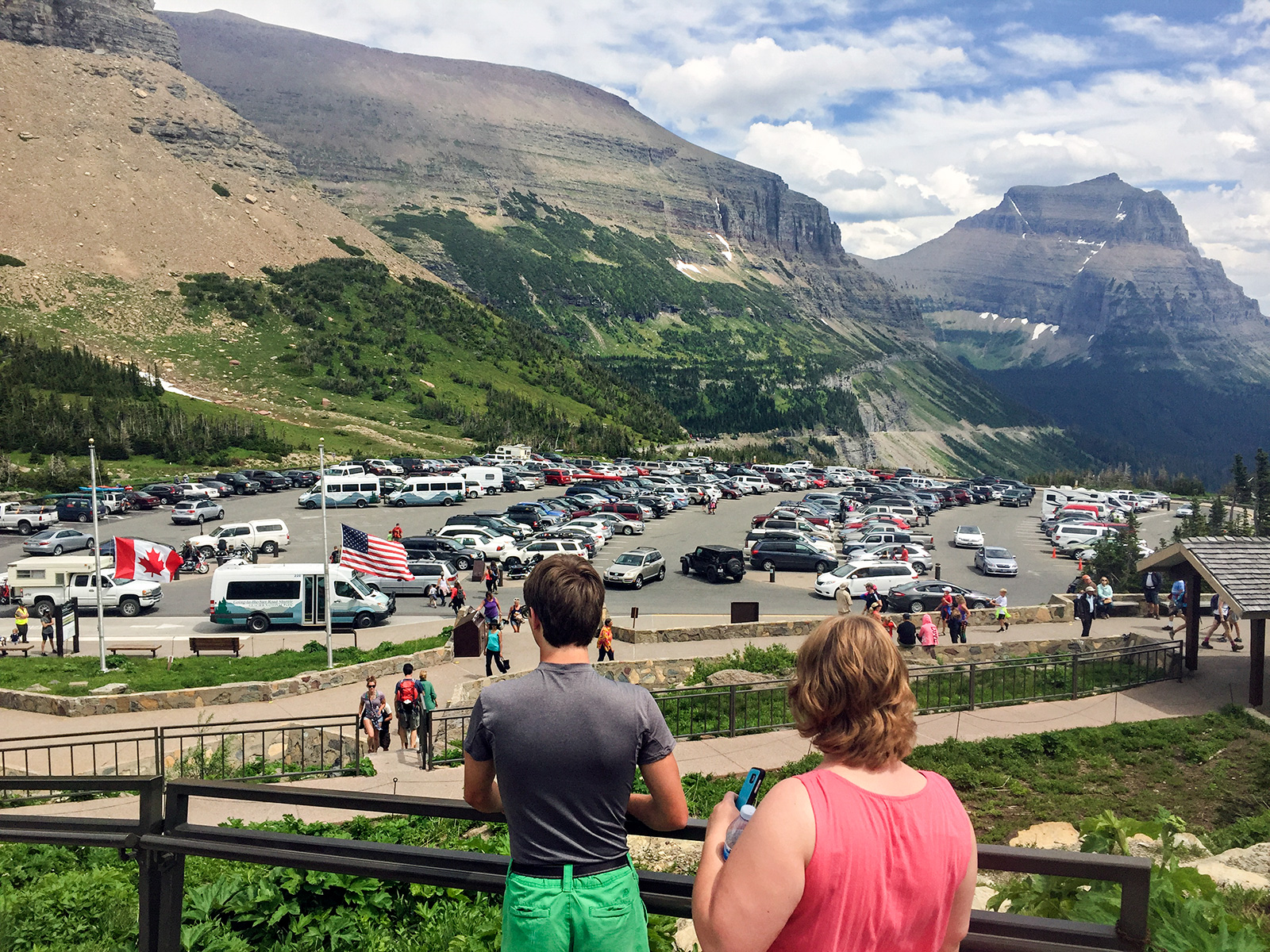Business leaders and community stakeholders from throughout the Flathead Valley met with representatives of Glacier Country Tourism (GCT) this week to discuss a new strategy aimed at reining in traditional marketing campaigns in favor of a more sustainable approach, which is geared toward creating “destination stewards” in a region overrun by visitation.
Dubbing it the “Destination Stewardship Strategy,” GCT kicked off the campaign at a Nov. 4 meeting, which marked the first step in a 10-year collaborative partnership between the tourism arm and other key community sectors. The strategy marks a shift away from destination marketing and instead aims to manage aging infrastructure, overcrowding and impacts on the local lifestyle.
For example, instead of promoting a destination for the amenities it can offer its visitors, the strategy invites visitors to ask what values they can offer a destination, including through greener and more equitable activities.
In the decade preceding the COVID-19 pandemic, growth in the travel-and-tourism industry outpaced the global economy. In Montana, tourism is the second-leading industry, bringing billions of dollars into the state each year and supporting tens of thousands of jobs for residents. According to GCT President and CEO Racene Friede, nonresident visitors have spent between $3.2 and $3.7 billion in Montana over the last several years.
The plan aims to create a sustainable strategic vision for Glacier Country’s visitor economy that preserves the quality of life and quality of place for residents of westerncommunities.
Friede, along with consultants Jim McCaul of MMGY NextFactor and Cathy Ritter of Better Destinations, led the forum, which members of the strategy’s steering committee also attended, including Aubrie Lorona of Swan Mountain Outfitters.
A series of questions guided the two-hour conversation, including a virtual survey inviting attendees to define “destination stewardship.” The answers, which were displayed on a screen before the crowd, included: “Don’t kill the goose that lays the golden egg.” Another read: “Buzzwords used to sugar coat the fact that tourism has been detrimental to the environment, communities and individuals.”
Such sentiments are not new. Record-breaking crowds at Glacier National Park have sparked considerable opposition to tourism promotion and heightened tension toward newcomers in the valley. Social media accounts and comment sections online have expressed concerns over increased visitation.
Nonetheless, consultants and attendees imagined what the ideal visitor would look like while acknowledging that visitation to western Montana will continue to increase.
Brandon Gonski, general manager of Glacier Raft Co., proposed shifting travel demands to attract different demographics. “Why are we in this conference room right now?” Gonski asked. “Why isn’t a company here? Let’s get a company to host a conference here so that business travelers can spend money in our shops and restaurants in November.”
Several ideas circulated around the room, including tourism education. Stakeholders familiar with the industry offered their suggestions and ideas such as how to spread visitors into the shoulder seasons to ease crowds during the peak season.
“There’s so many different opportunities that tourists are not aware of,” said Rhonda Fitzgerald of the Whitefish Visitor’s Bureau, Governor’s Tourism Advisory Council and owner of the Garden Wall Inn and Whitefish. “As part of the tourism board we try to inform visitors of different areas outside of Glacier Park that way we can spread out recreation use.”
Concerned locals vented about visitors’ behaviors, citing their lack of respect or awareness for the surrounding environment. One attendee likened destination marketing to amusement park attractions: “People assume that because they’re on vacation, no one lives here and that everything is for their amusement, like its Disneyland.”
Others were eager to redress bad habits, such as speeding, litter and impatience that extended outside of Glacier’s boundaries. They too pondered the possibility of a tourism campaign geared toward educating visitors on how to travel responsibly.
“What if upon arrival into Glacier Park International Airport visitors were greeted with public service announcements that emphasized Montanan values?” asked one attendee. “Slogans like, ‘What’s the rush?” or ‘Drive slow,’ would help inform visitors and even newer residents of how we behave around here.”
Such sentiments echoed GCT’s recent partnership in the national Recreate Responsibly initiative. The tourism campaign directs visitors on how to be good stewards of Montana’s people, culture and land with slogans like “know before you go” and “respect others.”
Erica Wirtala of Northwest Montana Association of Realtors made a final comment at the end of the meeting, drawing attention to the myths that entice newcomers, notably one that is Montana still exists as the true Wild West.
“There is an underground message that says, ‘Come to Montana and do whatever the hell you want,’” Wirtala said. A belief like this, Wirtala says makes people lose sight of how to act safely and responsibly.
For 34 years, GCT has been marketing the region as a travel destination. The 1987 state mandated Lodging Facility Sales and Use Tax (4%), commonly referred to as the “Bed Tax,” raises money for the Department of Commerce to spend on tourism promotion. However, GCT is among the first tourism organizations in the U.S. to dedicate resources for a Destination Stewardship Plan.
GCT will host a virtual meeting on Nov. 18 for those who could not attend the in-person town hall.
The group will continue to engage with communities through focus groups and electronic surveys for residents and industry stakeholders. The results will be revealed in the spring of 2022.
For more information visit partners.glaciermt.com/destination-stewardship.
